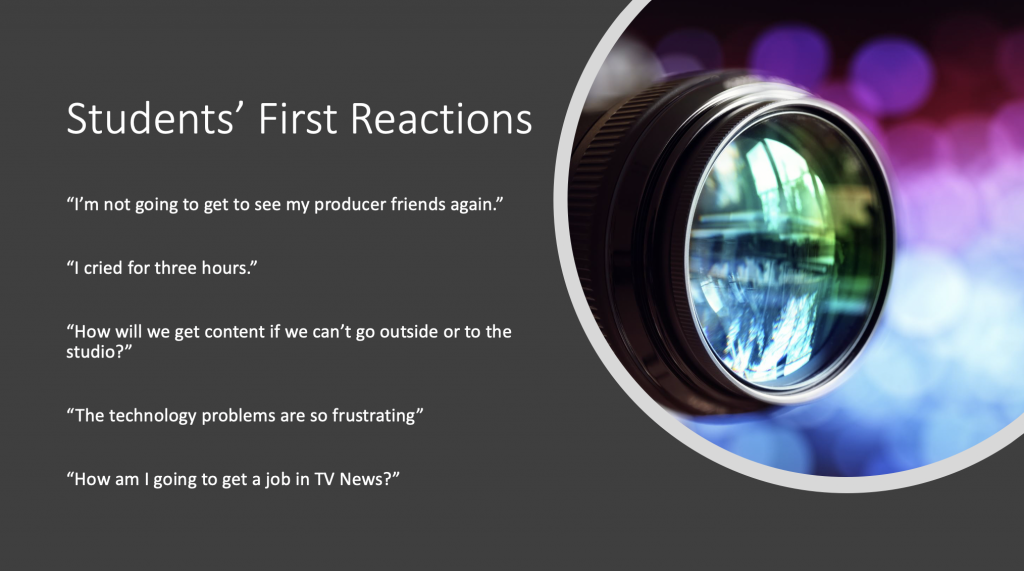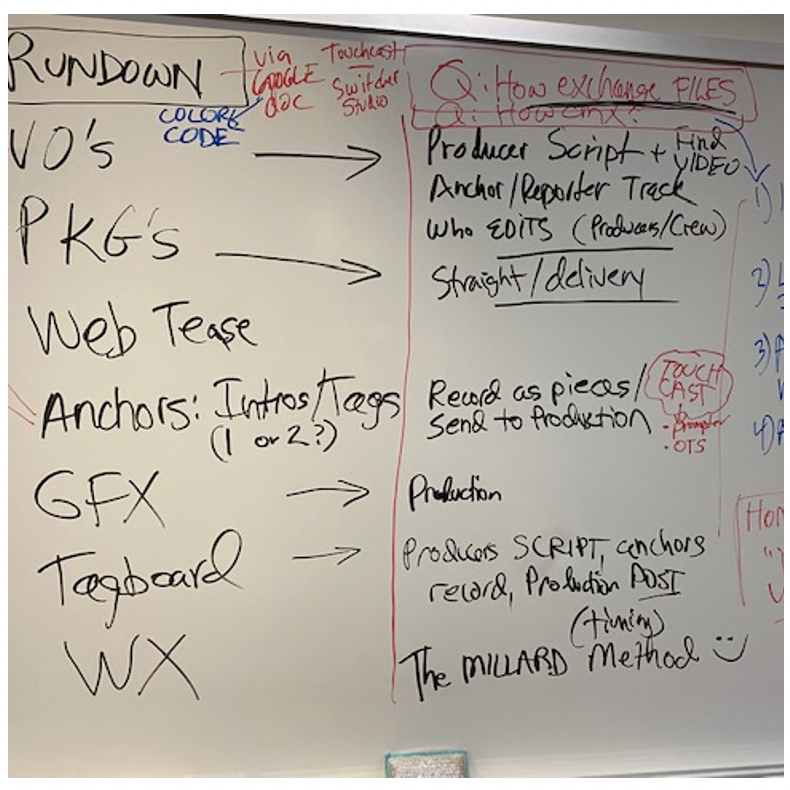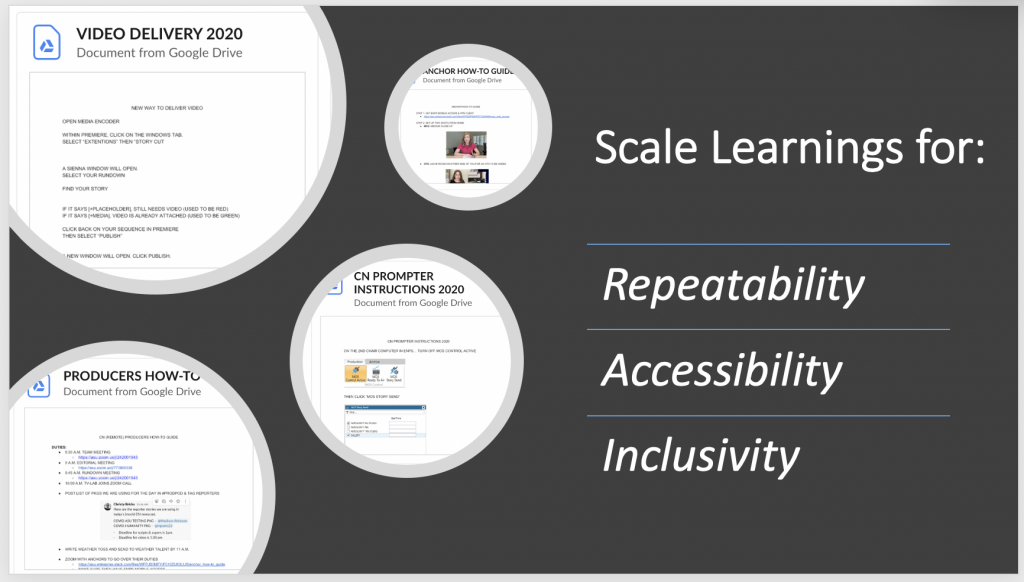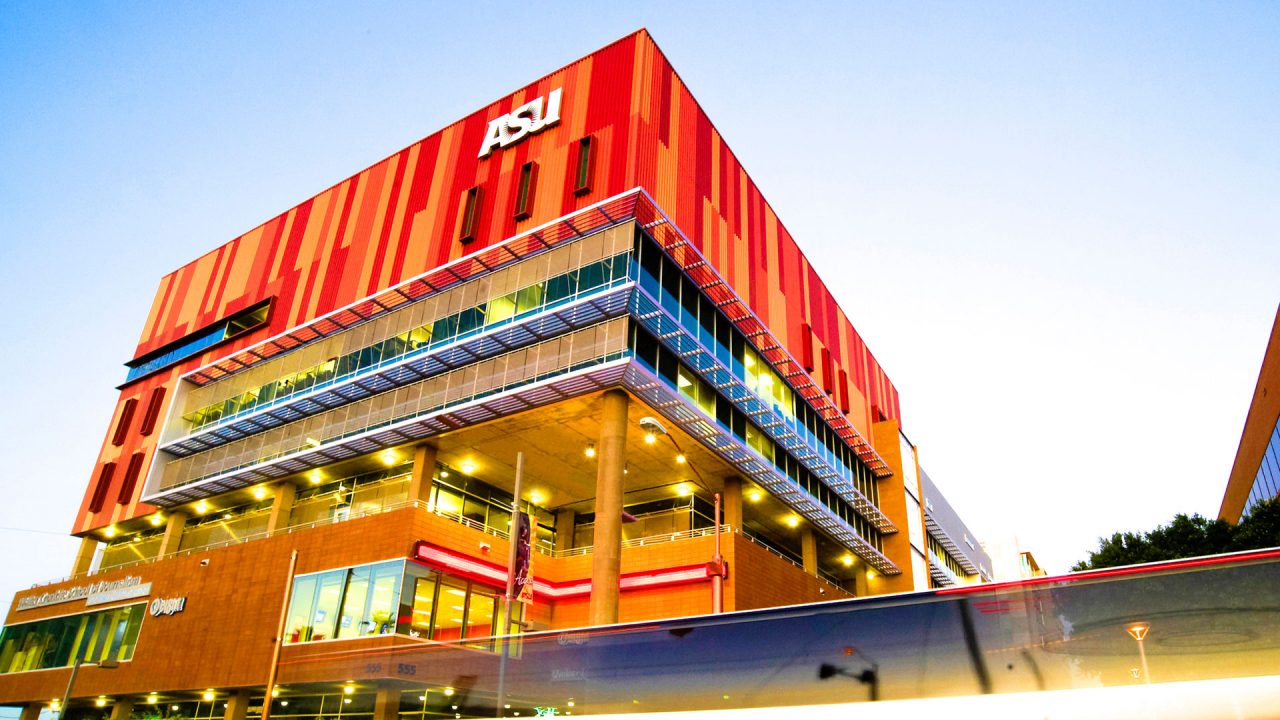As students returned to ASU’s Cronkite School of Journalism this week, I found myself reflecting on these extraordinary six months since that day when we suddenly sent our students home in early March, in response to the pandemic outbreak. Overnight they lost access to our building and broadcast facility, and its professional-grade production equipment; they also lost in-person access to both peers and instructors; and, as developing journalists, they were asked to give up in-person reporting and interviewing for health safety.
What happened next still makes me marvel. The students responded to this loss of traditional tools and access with unprecedented innovation and collaboration, and reimagined “doing the news” in a virtual environment.
Of course, local newsrooms across the country faced — and ultimately solved — this same challenge. As I’ve reflected on those early days and weeks, I recognized six keys to this successful transition and true transformation at Cronkite – lessons relevant to any journalist or newsroom leader looking to adapt and evolve in these disrupted times. As I disrupt myself, and move from ASU Cronkite to my next challenge (more on that at the end), it seems only fitting to share the lessons this ‘teacher’ is grateful to have learned from these remarkable young journalists.
1. Keep It Real: Acknowledge the Disruption
Call it “the elephant in the room” if you like. Whether it’s worries about the pandemic, the strain from a long-overdue conversation about race in America, concerns about the integrity of November’s election, or just general fears related to economic or health insecurity, there is a lot to be anxious about these days. From a leadership standpoint, the question is how to avoid having your teams be paralyzed by these fears.
“I learned that courage was not the absence of fear; but the triumph over it,” said Nelson Mandela. These are challenging times and it’s disingenuous for leaders to pretend otherwise. Confronting these fears is an essential place to begin. Several weeks after our Spring term students were forced off campus by COVID-19, I interviewed a group of them to ask about their first reactions to the news. The answers were a litany of loss and fears.

Imagine trying to “force” innovation or even enthusiasm when this is how people are feeling. Put differently, as several ASU students said to us as faculty at the time: “Read the room.”
Three students — Veronica Galvin, Tina Giuliano and Jamie Landers — who would become key leaders in the transformation to come, described well what many others were feeling.
“We had worked so hard to get to that point,” said Giuliano.
“The three of us had a group message: We can’t use the studio, we can’t use our equipment,” said Landers. “That was the hardest part to process.”
“The overall feeling was bummed out,” added Galvin.
The time spent by Cronkite faculty (and time we continue to spend even now) checking on one another was essential, making sure everyone had a chance to share how they were feeling, and what they needed. The effect was that people saw they were not alone in their stress and experiences of loss and disruption. In hindsight, the time spent acknowledging that seems to have been crucial to successfully moving on to the next stage.
2. From What Can’t Be Done, to What CAN Be Done
Anyone who’s been in a newsroom for even a short period of time has encountered that person who can tell you ALL the reasons why something cannot be done and is usually capable of finding those reasons to torpedo almost any idea. Of course we need to ‘keep it real’ about resource limitations and operational challenges; but especially in these difficult times, the only way to move forward is to shift focus from what CAN’T be done to what CAN be done.
“Two days,” answered Landers when I asked how long it took the three of them to move from loss to opportunity. “We tried to think of a way to bring back some normalcy. Lots of people were feeling defeated.”
Students and faculty from the broadcast producing and studio production teams held a brainstorm session where we listed on one side the traditional activities and show elements (anchors, sets, packages, VOs, etc) and then used my favorite brainstorming phase: “How might we…?” to generate alternatives. Suddenly, the depressing feeling of loss was replaced with a kinetic energy of innovation and excitement.

Framing the challenge through the lens of what WAS possible was transformative. In short order, everyone felt we had a ‘rough draft’ of a way to reimagine, and actually produce, a newscast despite being entirely remote.
3. Empower Small, Interdisciplinary Teams
How do you go from idea to action fast? What worked in the Cronkite newsroom was empowering a small team with diverse, complementary skills. Rather than a carefully mapped out “plan” led by “managers” (faculty), this was a nimble motivated student team we nicknamed the “gladiators” because of the courage they showed to just fight through challenges. Landers and Giuliano brought reporting and anchoring skills; Galvin brought a supersized combination of both newscast producer and technical-director skills.
“Creating broadcast stories was one thing,” added Giuliano. “It was the newscast that we really missed…. and so we talked about ‘what CAN we do?’”
Managers, take heed. What these students really appreciated most was that the faculty were willing to ‘let go’ and empower the students to give their idea a try.
“Sometimes when you send something to your boss they’re like, ‘Good job — put it on your reel,’” said Galvin. “So it was nice to be heard, during this time when you are uncertain about just about everything.”
These trailblazers embraced the challenge of recreating the Cronkite News newscast, entirely virtually. They started on a Friday. Slacking and swapping files all weekend, by Monday the trio had created an entirely virtually produced newscast mockup and sent it to the faculty for review!
4. Prototype Your Way to Perfection
No matter how small or great the journey, it always starts with a first step. So often in newsrooms, the quest for perfection stalls innovation. Our Cronkite gladiators’ process showed the power of ‘prototyping’ as the way to begin. Their successes, and their smart failures, accelerated the process of making something even better.

That ‘first draft’ was in many ways miraculous. This small team of three, in a weekend, came up with workable solutions to everything from script-sharing to prompter to recording, file-sharing and show-assembly.
The newscast also had plenty of obvious opportunities to adjust and improve. And that is the point of creating prototypes. They help you figure out the next thing to do. In just the screenshot above, the students themselves identified a “what to work on next” list that included things like improved home set lighting, developing guidelines on the framing of the shots so both anchor shots matched, cleaning up set backgrounds (like the visible reflection of the ring light), along with other issues like matching audio fidelity.
This approach draws heavily from successful start-ups that quickly build a minimum viable product (MVP) so they have something to show potential customers and users and can get feedback, which then helps them quickly make the next iteration, and so on. It’s a learn by DOING approach — rather than the ‘do by planning’ lengthy process followed by so many legacy news organizations — that enables fast learning, fast feedback and fast improvement.
5. From Prototype to Production: Make It Scale!
The advantage of small, cross-disciplinary teams is they are nimble. They have, among them, the key required skills; but are not so large that they get bogged down. But there is a downside. The workflow isn’t sustainable.
“We were up until 3 a.m. that first night swapping video files,” admitted Landers. The gladiators couldn’t do it all, day after day, all by themselves. Besides, whether it’s a ‘teaching hospital’ like Cronkite or any other newsroom, in the long run leaders want inclusive processes that enable everyone to play a part. It’s actually one of the hardest parts of an innovation process — letting go of your baby!
“We were SO attached to it,” admits Giuliano.
“We had put way too much pressure on ourselves, and we were so afraid to let go of it. It might fall apart,” added Landers.
For Galvin, the process of adding others to the project was a big ‘aha’ moment: ”I realized at the end that was a little selfish of me and I had to think of others. I personally have all the technologies, but my peer next to me might not.”

As our trio of students learned, prototypes need to be scalable to have lasting value. New voices add new perspectives and drive the next level of improvement with their fresh ideas. These three students’ role in the process evolved from the doers to the teachers; they helped create “How-to” guides for each of the key teams — from producers, to studio production, to anchors — and then helped train their colleagues to make their prototype into something the entire team could produce daily.
6. Review, Revise, Repeat!
The other benefit of widening the circle of participation is more voices, enabling teams to continually iterate on the original production techniques to keep improving content quality, production value, and workflow efficiency.
The producers and studio production teams began to hold a daily debrief where everyone involved shared workflow challenges they’d encountered, as well as ‘wins’ and workarounds anyone had figured out. For problems, the group brainstormed options for other approaches, and those were then tested the very next day.
This process became a virtuous cycle of review, revise…repeat. For any challenge encountered, the wisdom of the crowd was put to work and ideas were tested until a better approach was identified, and that then became part of the updated workflow. This of course mirrors the best practice of product cycles followed by both nimble start-ups and tech giants like Apple.
In this model, it helps to think of everything as the ‘latest draft’ rather than the finished and final product. The ‘latest draft’ approach is always open to improvement.
So, what next? The power of a successful cycle of innovation is that it creates the combination of skills, experience and confidence to apply that same approach to the next opportunity. Therefore it should be no surprise that our team of gladiators was not done.
After launching the fully-remote Cronkite News, the trio “took a couple weeks off” to recover from that huge effort, said Giuliano. “And then we were bored.”
Prompted by a suggestion from their faculty director, Christy Bricks, they decided to create a half-hour special documenting the students’ experience of the early weeks of the pandemic, calling it “The Coronavirus Chronicles.”
“It was a way for us to keep working together as a team, but to also recognize a lot of other people who were doing creative things contributing to the coverage,” said Landers.
WATCH: Cronkite News Special – Coronavirus Chronicles
The gladiators’ takeaways from the experience should inspire any newsroom leader.
“It serves to show what you CAN do outside of the newsroom,” said Galvin. “As long as you have the drive and the motivation and you care about the reporting, you can do it.”
Plus, as Giuliano notes: “It’s fun to create something, and collaborate.”
“I hope it serves as an example of our resiliency,” said Landers. “It will be something we can look back on as – we didn’t give up, and we made the most of it.”
As I end my two years as a professor of practice working with ASU Cronkite students, I am not merely confident but optimistic in the future of journalism, because of the very qualities these students have displayed: courage to overcome fears, a willingness to be accountable to solve the problems in their path, a CAN-do rather than a can’t-do approach, the imagination to create new paths, and the determination to persevere past obstacles to their mission as journalists. It’s been an honor to learn from them.
Frank Mungeam will be joining the Local Media Association in September 2020 as Chief Innovation Officer, where he will lead innovation labs focused on journalism funding and collaborative journalism.
